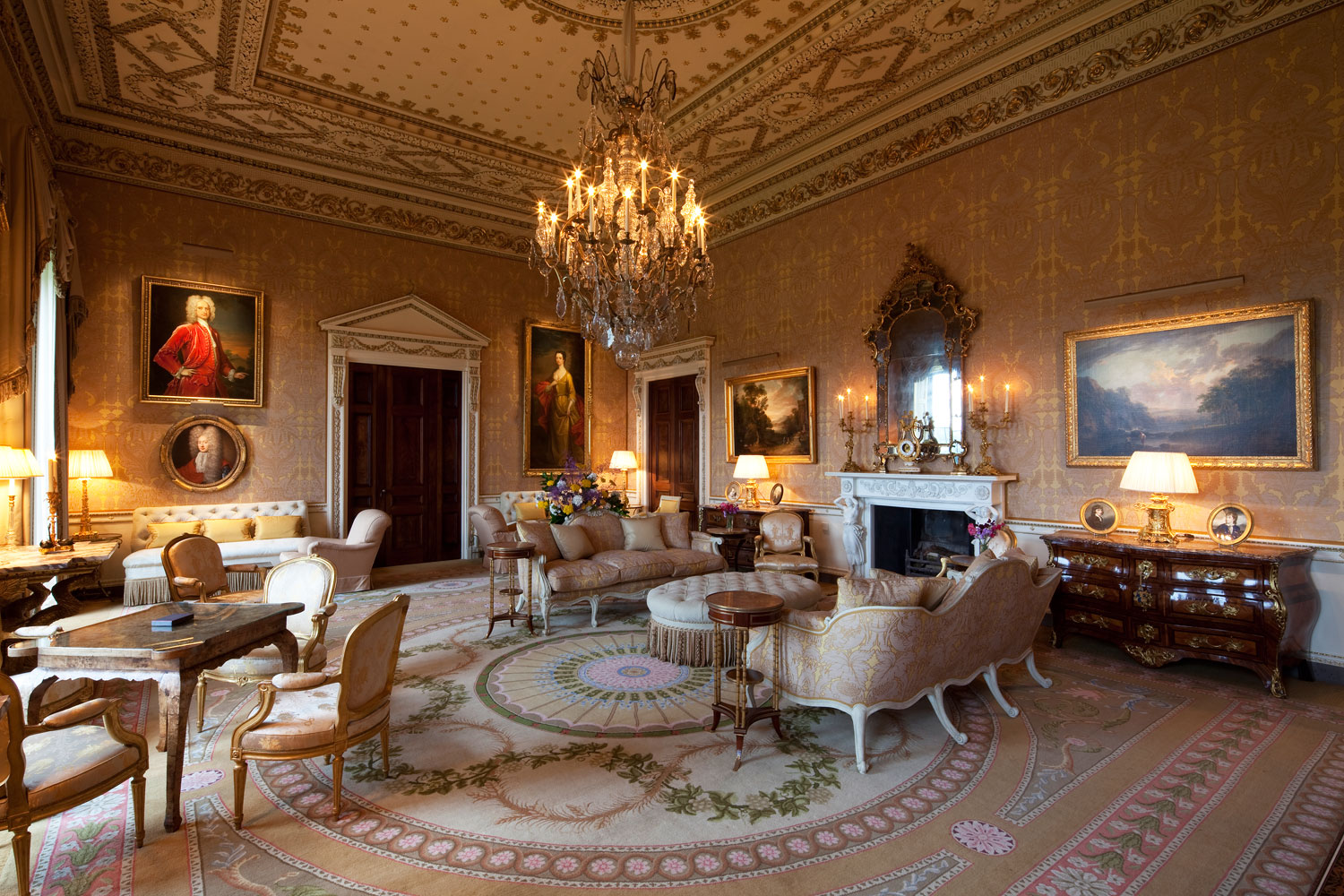Today, on St. Patrick’s Day, the Art Institute of Chicago will unveil a rare collection of Irish art in a new exhibit, “Ireland: Crossroads of Art and Design, 1690–1840” (through June 7). Ranging from portraiture to furniture to ancient artifacts once belonging to aristocracy, the exhibit tells the story of Irish artistry spanning the 18th century.
Four of the works on display are especially important to Chicagoan Fred Krehbiel, former co-chairman at the Lisle-based Molex, Inc. and a lead funder of the exhibit. That’s because these particular pieces came from Krehbiel’s historic hotel Ballyfin, an Irish country manor house set on 600 acres in Laois, Ireland.
A standout piece includes John Ryan’s 1790s portrait of the Bishop of Kilfenora.
“It’s one of the great stars of the show,” says William Laffin, an advisor on the works of art at Ballyfin and also editor of the catalogue at the Art Institute show. The Ryan painting depicts an Irish priest at a time when the Catholic religion was restricted, so it was considered quite a feat for a bishop to manage to get himself painted. “It’s an image redolent of Ireland’s long and sometimes contentious and violent past.”
A visit to the exhibit is the perfect way to set the stage for a trip to Ballyfin, which just last Friday unveiled five new rooms, bringing the house total to 20.
An extravagant neoclassical manor, Ballyfin was originally built in 1822 by a wealthy Irish baronet and his wife. In 2011, following an eight-year renovation, Krehbiel and his wife, Kay, opened the doors of the hotel.
A stay here is akin to stepping into your own Downton Abbey set. Chambermaids and butlers line the driveway when you arrive, champagne receptions are the norm, and enjoying a coursed dinner while dressed in period attire bought from the Lyric Opera of Chicago is entirely possible. Activities range from falconry and archery to swimming in the pool, rowing on the 28-acre lake or climbing follies, such as the huge tower, built strictly for fun.
But for aesthetes, Ballyfin is more about the chance to sleep in a highly curated hotel. “It is a treasure house of the arts of Ireland,” says Laffin, who described interiors studded with hundreds of individual objects, drawings, and prints, all from Ireland, and all original. “The highest quality works are here,” Laffin explained, “many of which would very happily be in the great museums of Ireland and the world.”
These include portraits of the original Coote family, which line the cantilevered stairway, and a Van Der Hagen room—who Laffin calls “a hero of the Art Institute exhibition”—where eight of the Dutch artist’s large monochrome paintings hang, all procured from Irish country houses.
“The very fact that pictures and objects from Ballyfin have been selected to go into the show at the Art Institute of Chicago, where the standards are very high, I think only emphasizes what we’ve done at Ballyfin.”
Rates at Ballyfin currently run from $850 a night per person through April. Aer Lingus offers direct, easy overnight flights to Dublin, an hour west of Ballyfin.
Travel News
United Club Lounges Get Upgraded, Starting with Chicago O’Hare
This month, United Airlines announced plans to upgrade its 49 United Club airport lounges, beginning with Chicago O’Hare International Airport. The update includes a new complimentary food menu focused on fresh and healthy options, extensive club renovations, and a hospitality-focused approach to customer service.
What the Apple Watch Means for Travelers
The new Apple Watch will be ready for pre-order on April 10. What will it offer to travelers? The ability to track calories while “romping around Rome,” transactions with the scan of a write, and 18 hours of battery life. There’s more at Travel+Leisure.
36 Hours in Los Cabos, Mexico
Ravaged last fall by Hurricane Odile, Los Cabos (Cabo) is making a comeback with reopened resorts, new golf courses, and a new seasonal flight. “Though margarita-inspired indolence rules the region, rent a car to explore the peninsula’s less explicit charms, including surf breaks, organic farms, the Baja desert and a pair of art-centric colonial towns.” Writer Elaine Glusac has more at The New York Times.



